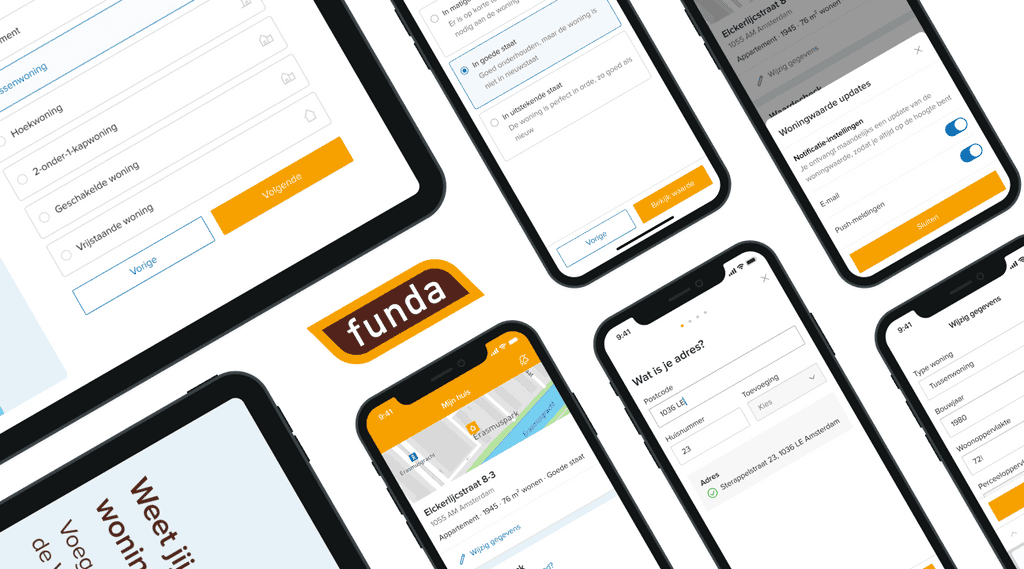

Home Value Check
We developed an online tool to estimate your home value, based on a learning algorithm. The feature was built iteratively, with an integrated customer feedback loop as the steering wheel for improvements.


Home Value Check
We developed an online tool to estimate your home value, based on a learning algorithm. The feature was built iteratively, with an integrated customer feedback loop as the steering wheel for improvements.


Home Value Check
We developed an online tool to estimate your home value, based on a learning algorithm. The feature was built iteratively, with an integrated customer feedback loop as the steering wheel for improvements.
What also became apparent is that there were often clear flaws in the way they estimated their home value. Home owners for example looked at the asking price of homes for sale in their area, but couldn’t take the actual sale price into account as this isn’t public available data (for consumers).
What also became apparent is that there were often clear flaws in the way they estimated their home value. Home owners for example looked at the asking price of homes for sale in their area, but couldn’t take the actual sale price into account as this isn’t public available data (for consumers).
What also became apparent is that there were often clear flaws in the way they estimated their home value. Home owners for example looked at the asking price of homes for sale in their area, but couldn’t take the actual sale price into account as this isn’t public available data (for consumers).
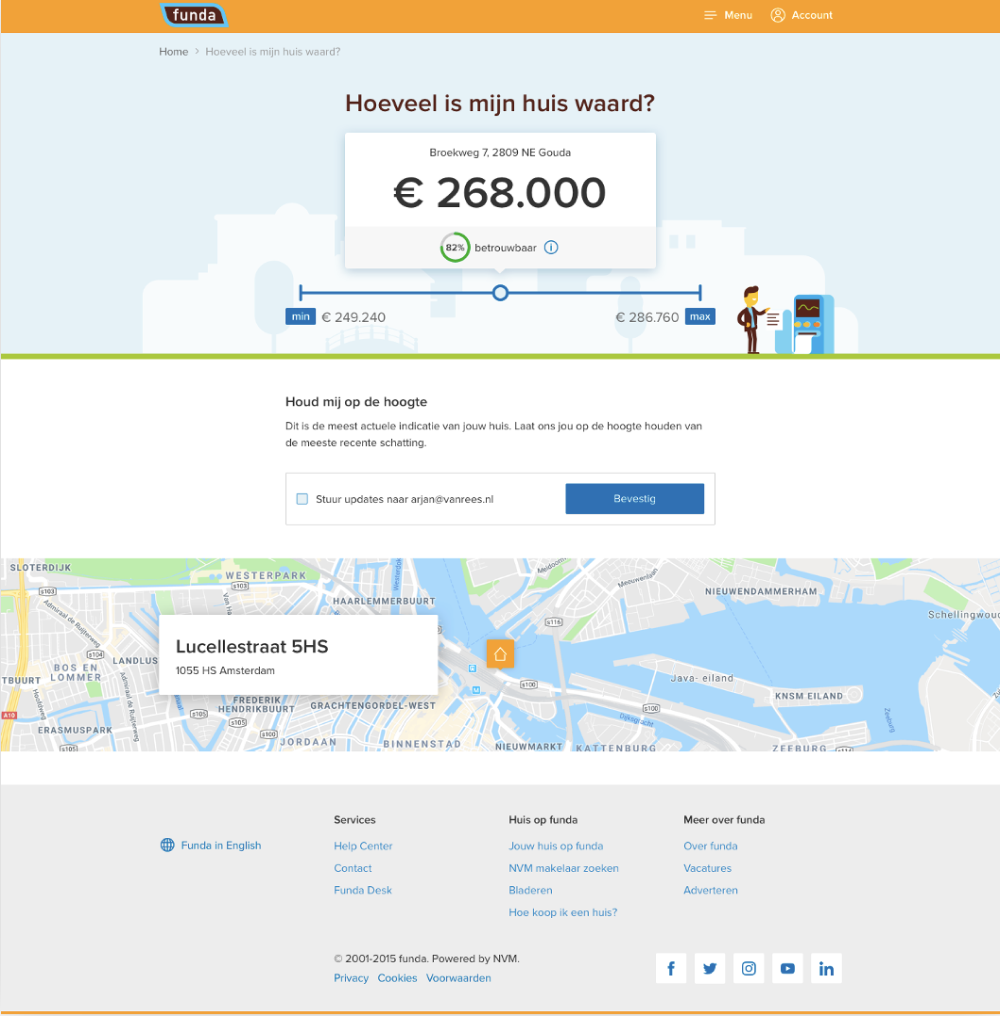





These interview insights were supplemented with quantitative insights about user interactions with the feature and the open feedback provided through the feedback tool. This led to these following key insights:
These interview insights were supplemented with quantitative insights about user interactions with the feature and the open feedback provided through the feedback tool. This led to these following key insights:
These interview insights were supplemented with quantitative insights about user interactions with the feature and the open feedback provided through the feedback tool. This led to these following key insights:
Solution
Iterative development
Based on the research insights, we decided to focus on (1) making the tool more flexible to fit user needs, (2) explaining how the tool works in an accessible way and (3) making it easier to keep track of your home value.
An online home value estimation tool, focused on ease of use & understandability
You're able to correct the prefilled home details or play around with them, to explore potential impact of a home extension.
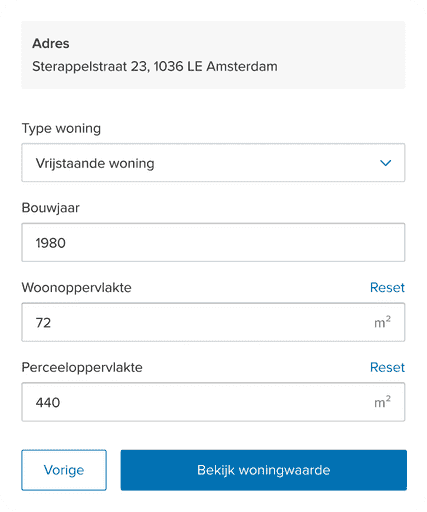
Price history
To get a grasp on how your home value has changed, you can zoom out and look at the price development in the last 12 months.

Price history
To get a grasp on how your home value has changed, you can zoom out and look at the price development in the last 12 months.
Monthly updates
Opt-in to receive a monthly value update in your inbox, to stay on top of your home value development via email and/or push.

Solution
Iterative development
Based on the research insights, we decided to focus on (1) making the tool more flexible to fit user needs, (2) explaining how the tool works in an accessible way and (3) making it easier to keep track of your home value.
An online home value estimation tool, focused on ease of use & understandability
You're able to correct the prefilled home details or play around with them, to explore potential impact of a home extension.

Price history
To get a grasp on how your home value has changed, you can zoom out and look at the price development in the last 12 months.

Price history
To get a grasp on how your home value has changed, you can zoom out and look at the price development in the last 12 months.
Monthly updates
Opt-in to receive a monthly value update in your inbox, to stay on top of your home value development via email and/or push.

Solution
Iterative development
Based on the research insights, we decided to focus on (1) making the tool more flexible to fit user needs, (2) explaining how the tool works in an accessible way and (3) making it easier to keep track of your home value.
An online home value estimation tool, focused on ease of use & understandability
You're able to correct the prefilled home details or play around with them, to explore potential impact of a home extension.

Price history
To get a grasp on how your home value has changed, you can zoom out and look at the price development in the last 12 months.

Price history
To get a grasp on how your home value has changed, you can zoom out and look at the price development in the last 12 months.
Monthly updates
Opt-in to receive a monthly value update in your inbox, to stay on top of your home value development via email and/or push.

Results
After multiple iterations we developed a valuable tool for home owners to estimate their home value. We managed to reach an average customer satisfaction rate of 85% and have coverage for more than 70% of all homes in the Netherlands.
customer
satisfaction
Estimates
per MoNTh
Results
After multiple iterations we developed a valuable tool for home owners to estimate their home value. We managed to reach an average customer satisfaction rate of 85% and have coverage for more than 70% of all homes in the Netherlands.
customer satisfaction
Estimates per MoNTh
Scaling up
Full rollout
After reaching the goals, we started scaling up, by opening up the feature to all of the Netherlands and launching a marketing campaign, to boost awareness.
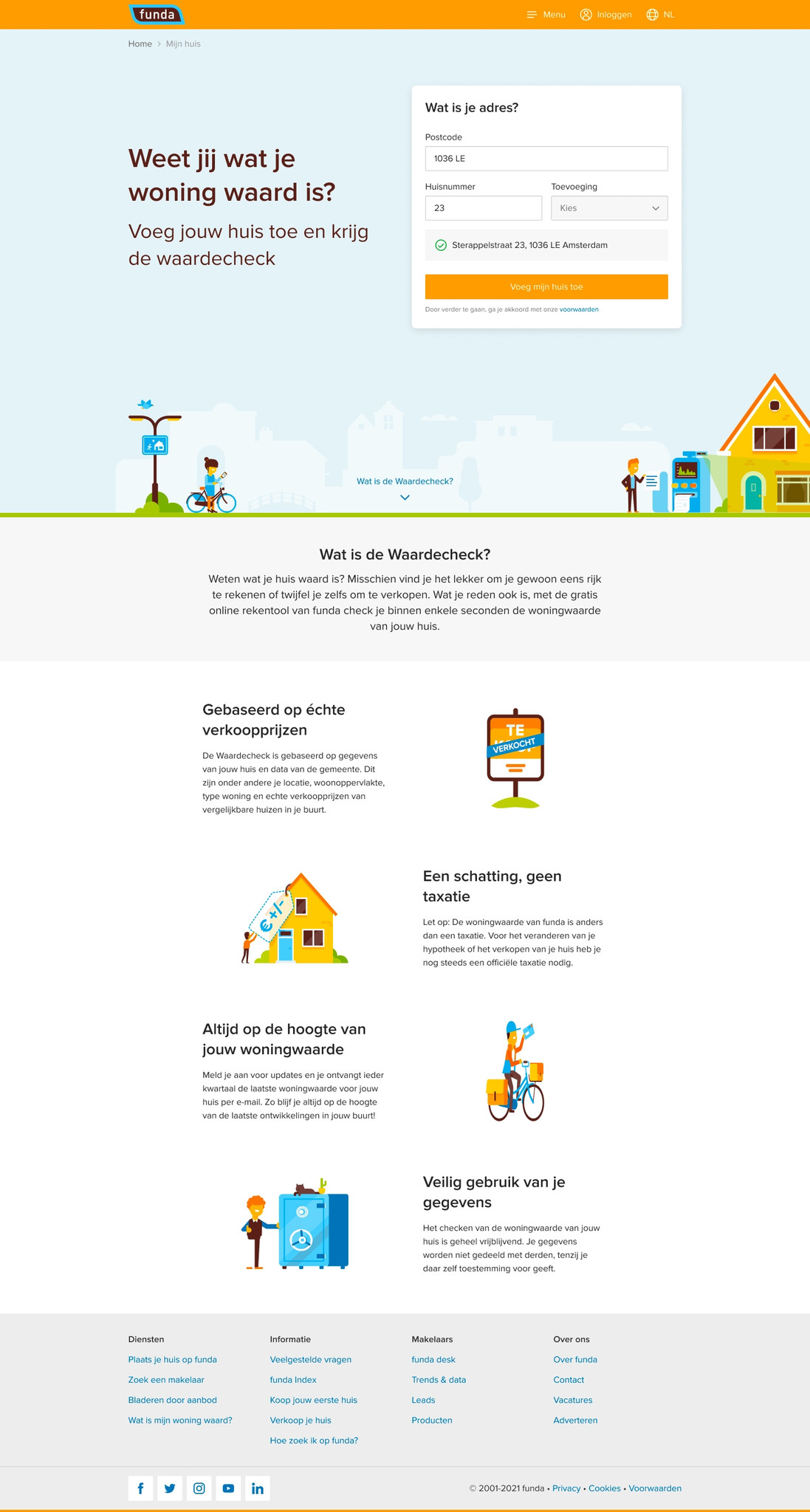
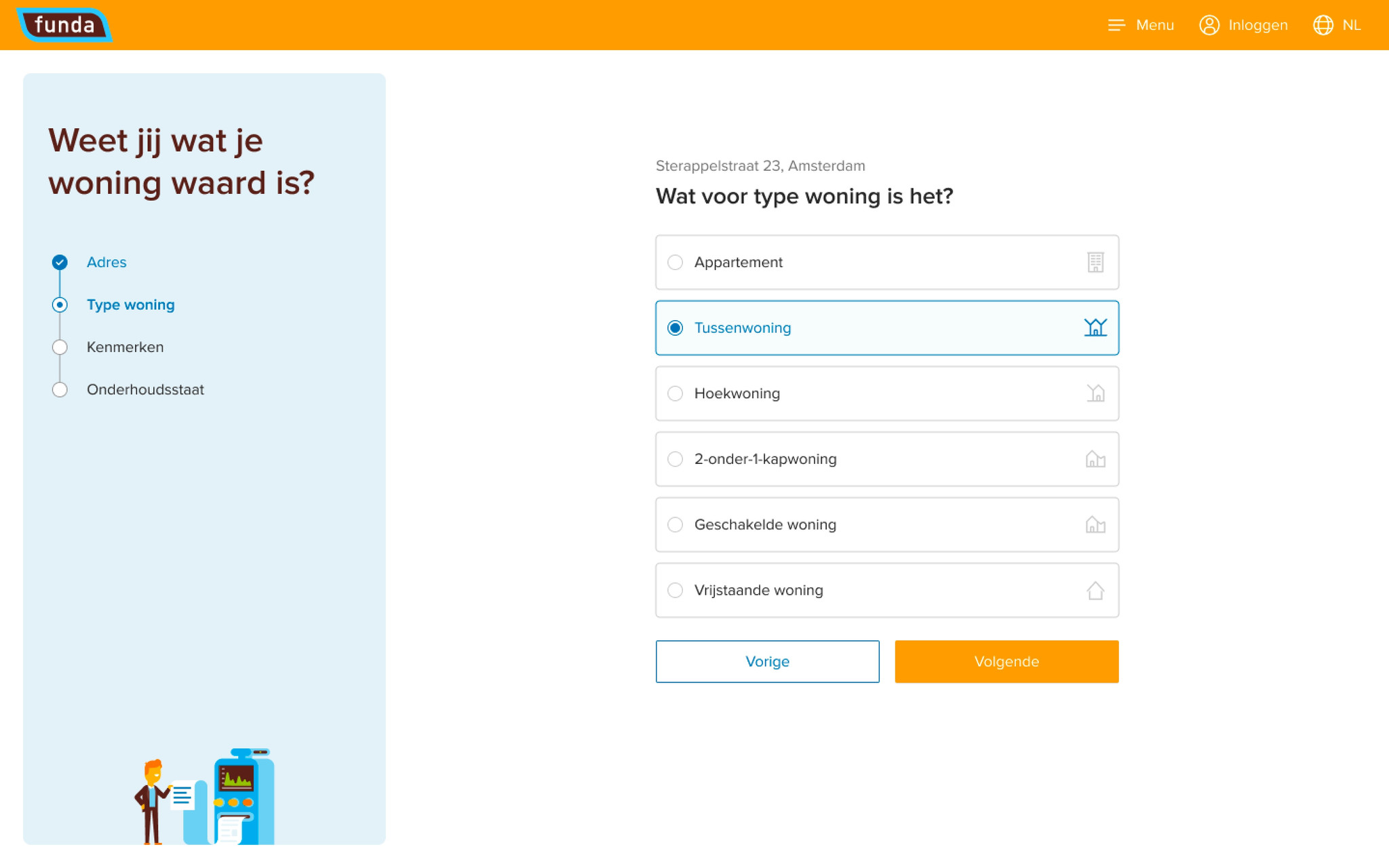
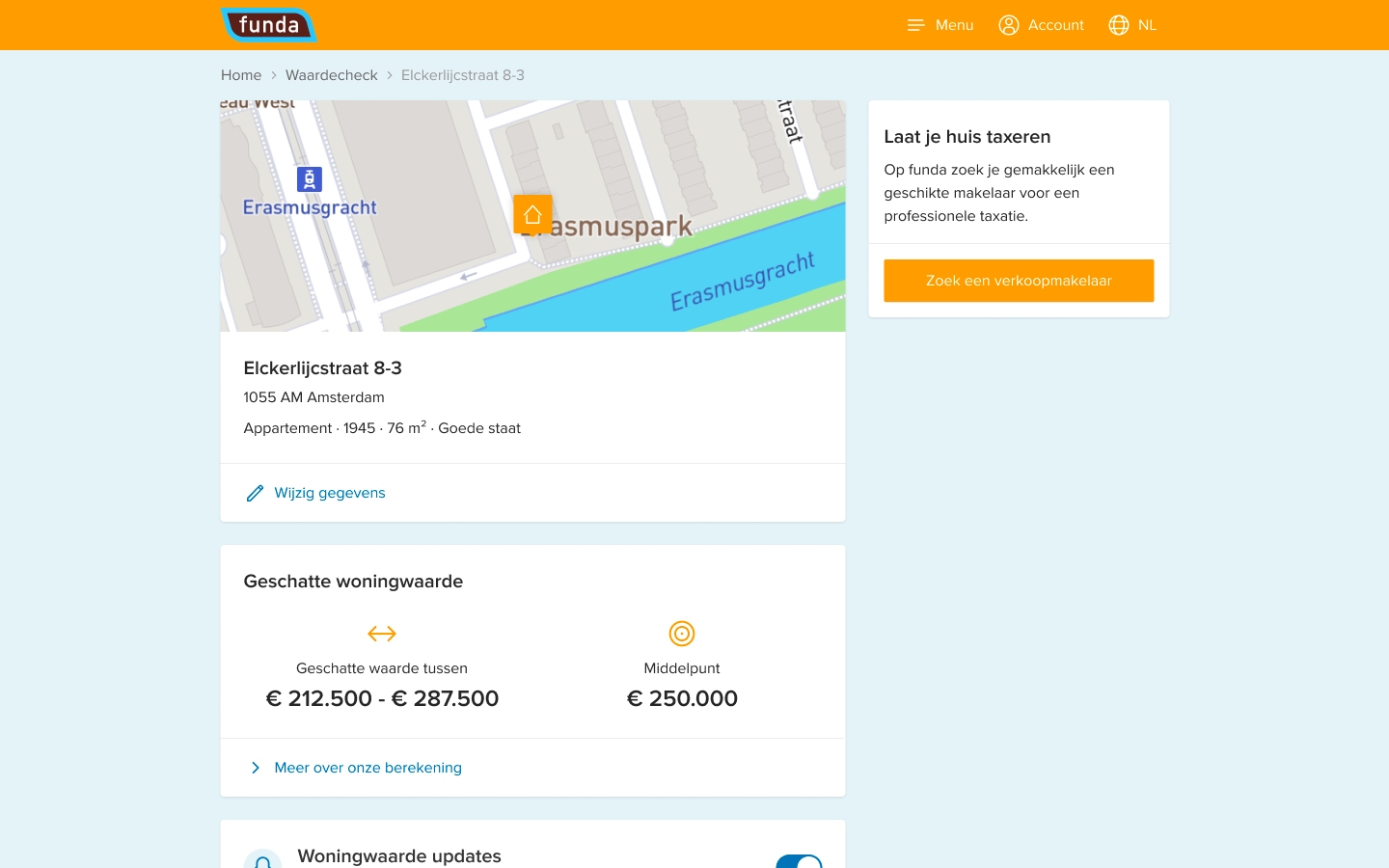
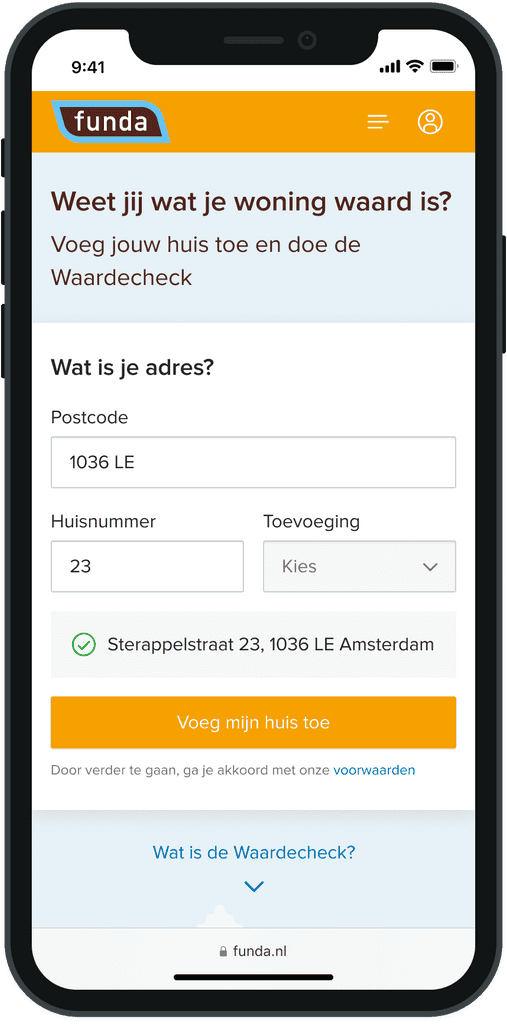

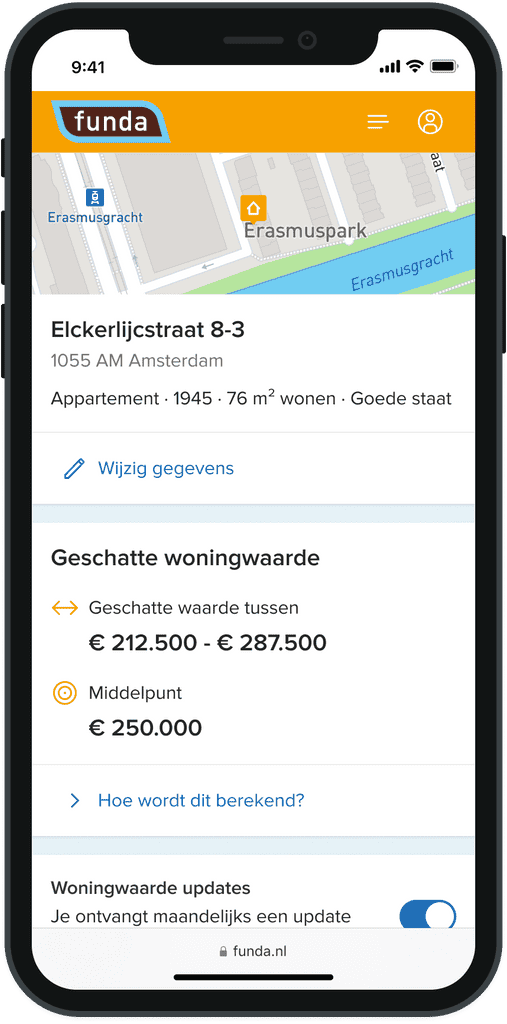
Landing page of the home value check






Mobile apps integration
After learning, validating and iterating on web, it was time to integrate it in the mobile apps as well. All the learnings from web could directly be applied, as well as some improvements.
Push notifications
Home-owners could now receive a notification as soon as their new home value was calculated.

Input wizard
We learned that asking for all your home details at once felt overwhelming, so we created a step-by-step input wizard.

Input wizard
We learned that asking for all your home details at once felt overwhelming, so we created a step-by-step input wizard.
My home
A dedicated tab was added in the app for your home dashboard for which the home value check was the first feature.
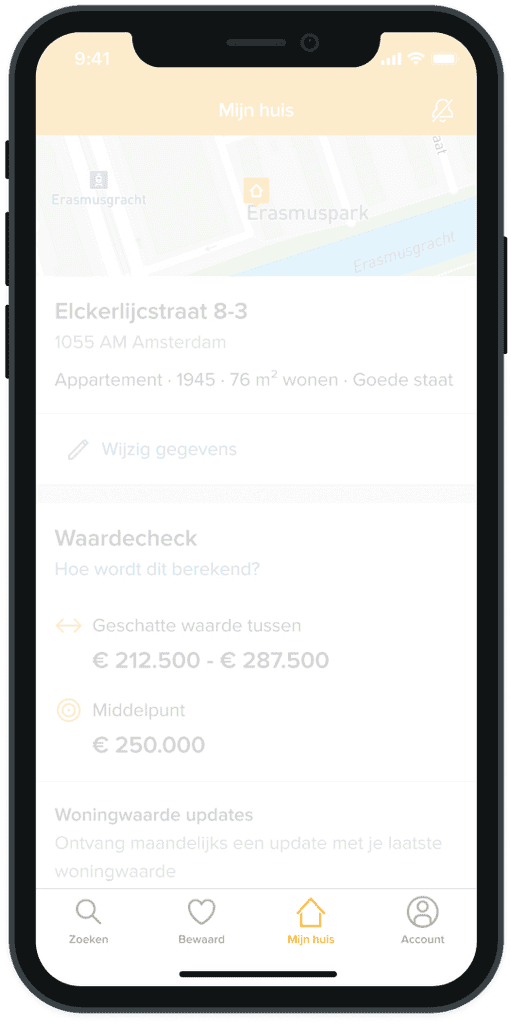
Scaling up
Full rollout
After reaching the goals, we started scaling up, by opening up the feature to all of the Netherlands and launching a marketing campaign, to boost awareness.






Your home dashboard with the home value estimate






Mobile apps integration
After learning, validating and iterating on web, it was time to integrate it in the mobile apps as well. All the learnings from web could directly be applied, as well as some improvements.
Push notifications
Home-owners could now receive a notification as soon as their new home value was calculated.

Input wizard
We learned that asking for all your home details at once felt overwhelming, so we created a step-by-step input wizard.

Input wizard
We learned that asking for all your home details at once felt overwhelming, so we created a step-by-step input wizard.
My home
A dedicated tab was added in the app for your home dashboard for which the home value check was the first feature.

Learnings
start small, listen, iterate
Start with the smallest product possible that provides user value. Then start learning from there and build iteratively. In the early stage of the product we optimized the feedback tool for quantity, so we could look at it in every refinement and see what the most pressing issues were to tackle.
data-driven product development
The data model defined our possibilities for estimating the home value, as we wanted to estimate home values within an acceptable level of confidence. If a certain home characteristic was essential in estimating a home value with confidence, we tried to figure out a way to get this data-point for from either reliable external sources or user input.
Learnings
start small, listen, iterate
Start with the smallest product possible that provides user value. Then start learning from there and build iteratively. In the early stage of the product we optimized the feedback tool for quantity, so we could look at it in every refinement and see what the most pressing issues were to tackle.
data-driven product development
The data model defined our possibilities for estimating the home value, as we wanted to estimate home values within an acceptable level of confidence. If a certain home characteristic was essential in estimating a home value with confidence, we tried to figure out a way to get this data-point for from either reliable external sources or user input.